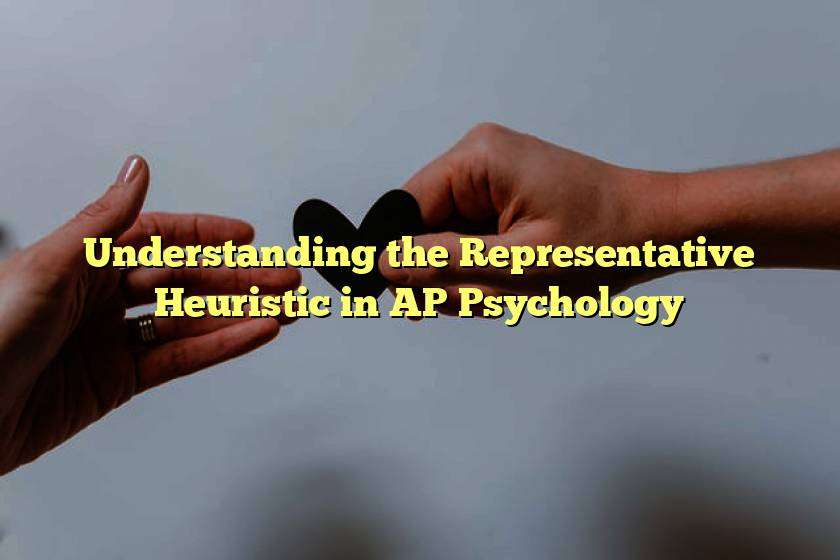In the field of psychology, one of the most interesting concepts is the representative heuristic. This theory suggests that people tend to judge the likelihood of an event based on how closely it resembles other similar events. Essentially, the representative heuristic involves making judgments based on stereotypes or prototypical patterns.
But what exactly does this mean? Let’s take a closer look at the representative heuristic and its implications.
What Is the Representative Heuristic?
The representative heuristic is a cognitive bias that affects how people make judgments and decisions. It occurs when someone bases their judgment on the extent to which an event or phenomenon resembles a typical or representative example of its category.
In other words, people may consider the likelihood of an event happening based on how well it fits into a predefined category, rather than actually assessing its probability. For example, someone might assume that a person who wears glasses is more likely to be intelligent because that stereotype is often reinforced in popular culture.
How Does the Representative Heuristic Work?
The representative heuristic works by categorizing things into mental models or prototypes that conform to certain expectations. These mental models are based on past experiences and expectations, and they help people make quick and efficient judgments.
For example, if someone is trying to decide whether a person sitting at a bar is more likely to be a lawyer or a bartender, they might base their decision on characteristics such as how the person is dressed, how they are behaving, and what kind of drink they have ordered. Based on their mental model of what a lawyer or bartender looks like, they might make an assumption about the person’s profession.
However, relying too heavily on the representative heuristic can lead to errors in judgment. Just because someone looks and acts like a typical lawyer or bartender, it doesn’t necessarily mean they are one. There are many social and cultural factors that can influence a person’s appearance and behavior, and it’s important to consider these before making assumptions.
Examples of the Representative Heuristic
The representative heuristic can be seen in many aspects of everyday life. Here are a few common examples:
- Stereotypes: People often make assumptions based on stereotypes, such as assuming that all blondes are dumb, or all Asians are good at math.
- Sports: Coaches might base their decisions on mental models of what an ideal athlete looks like, leading them to overlook talented players who don’t fit their expectations.
- Medical diagnoses: Doctors might make judgments based on what they think a typical pattern of symptoms looks like, leading them to miss less common or atypical diagnoses.
- Jury decisions: Jurors might base their verdict on how closely a defendant fits the mental model they have of a criminal, without considering the evidence presented in court.
The Implications of the Representative Heuristic
The representative heuristic can have significant implications for individuals and society as a whole. For instance, it can lead to stereotyping and discrimination, as people make assumptions based on limited information. It can also affect decision making in a variety of fields, from finance to politics.
In addition, the representative heuristic can be difficult to overcome, as mental models are often deeply ingrained and reinforced over time. Recognizing the prevalence and impact of this cognitive bias is an important step in addressing it.
Conclusion
Overall, the representative heuristic is an important concept in AP psychology. By understanding how it works, we can become more aware of our own biases and make more informed judgments and decisions. While mental models and stereotypes are often useful for making quick judgments, it’s important to recognize when they may be limiting our ability to see things in a more nuanced and complex way.



